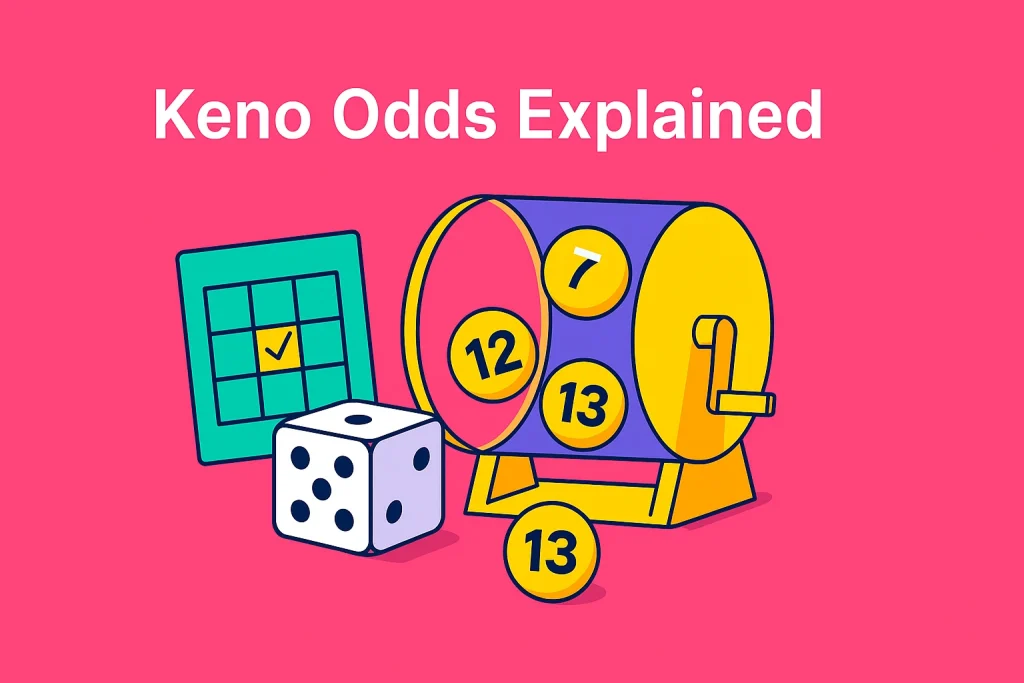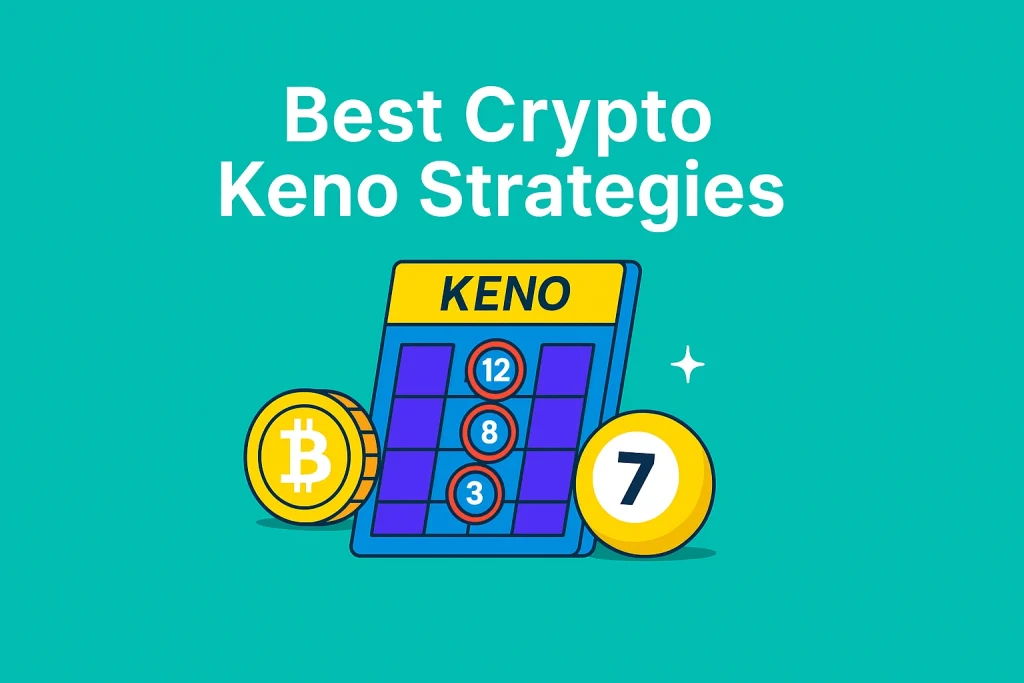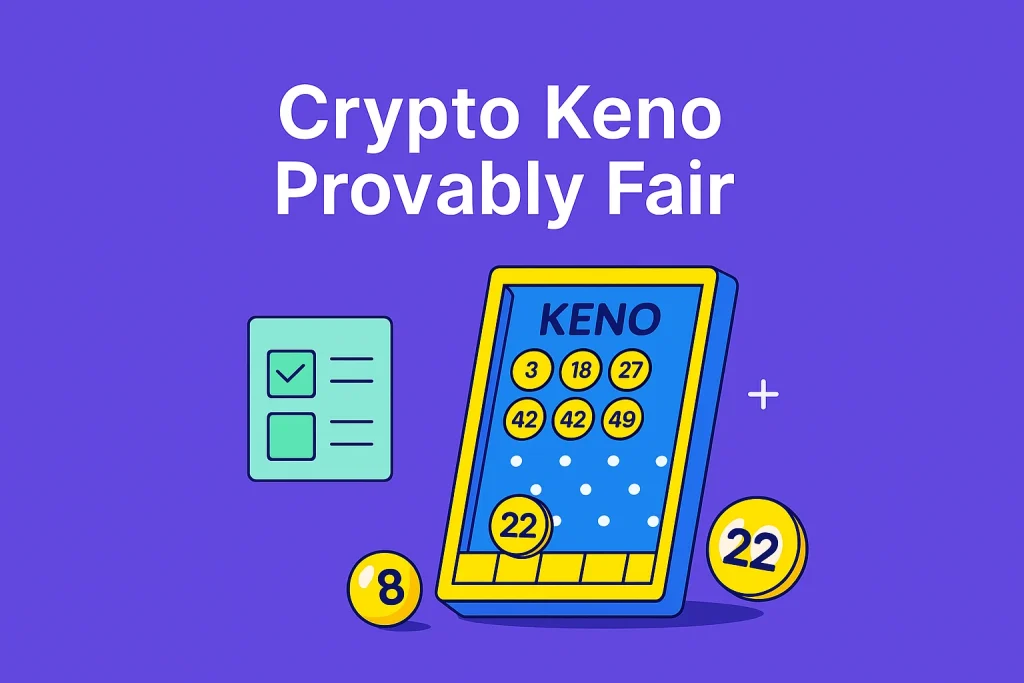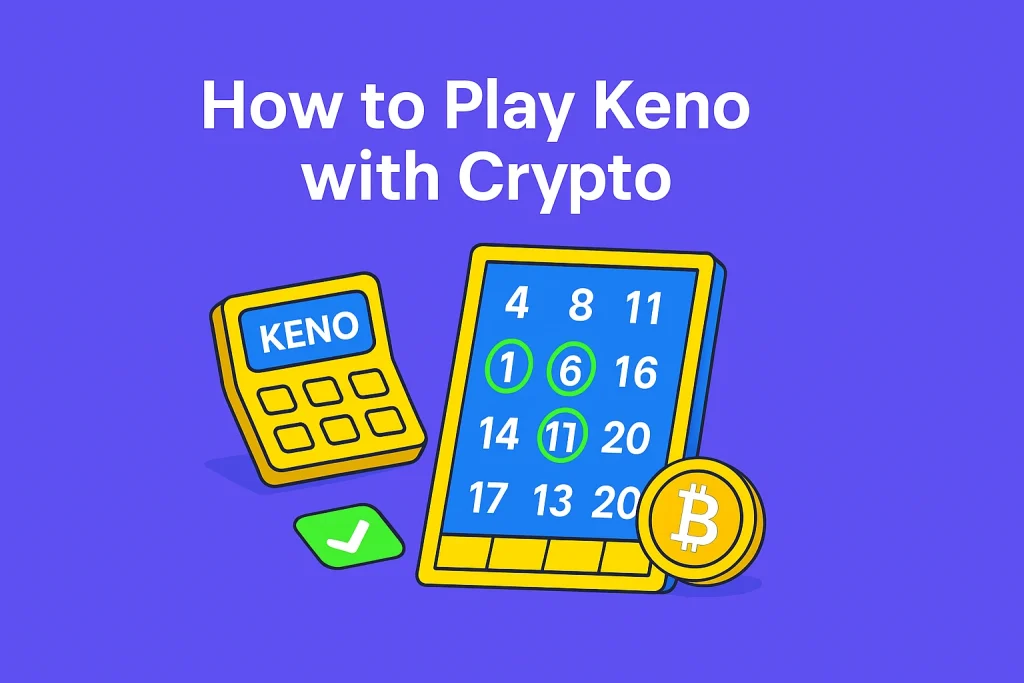Keno might feel random — and it is — but that doesn’t mean it’s unpredictable. If you’re still deciding where to play, check out our guide to the best crypto Keno sites to find trusted platforms with great gameplay and bonuses.
The game is built on clear mathematical odds, and once you understand them, you’ll know what kind of results to expect based on how many numbers you pick. Whether you’re playing in a traditional setup or in a crypto casino, the odds don’t change — but how you use that knowledge can affect your overall experience.
So let’s break it all down. How likely are you to win in Keno? What number of picks gives you the best shot? And how can you play with realistic expectations?
First Things First: What Are You Up Against?
In most Keno games, you’re picking between 1 and 15 numbers from a pool of 40 to 80 (most commonly, 1–80). Then the game randomly draws 20 winning numbers.
The number of picks you choose — and how many of them you match — determines your payout. But here’s the catch:
The more numbers you pick, the harder it is to match most of them. But the reward if you do match many is significantly higher.

Match Probability by Number of Picks
Let’s say you pick 10 numbers. What are your odds of hitting:
- 0 matches? ~6.2%
- 5 matches? ~21.8%
- 8 matches? ~1.0%
- All 10? ~0.0002% (that’s 1 in 3.5 million)
These odds vary depending on your number of picks — and the Keno variant — but the trend is clear:
- Fewer picks = easier to hit some, lower payouts
- More picks = harder to hit most, higher payouts
You can’t beat the math, but you can choose the odds that suit your playstyle.
Example: Odds for Matching Picks in Classic Keno
| Picks | Match | Odds of Match |
|---|---|---|
| 3 | 2 | ~1 in 8 |
| 5 | 3 | ~1 in 12 |
| 7 | 4 | ~1 in 16 |
| 10 | 6 | ~1 in 75 |
| 10 | 10 | ~1 in 3,535,316 |
These aren’t slot-level jackpots, but still… chasing 10 out of 10 is like buying a lottery ticket. Fun, but not your best route for steady results.
Does That Mean You Should Pick Fewer Numbers?
Not necessarily.
While hitting 2 out of 3 is easier than hitting 8 out of 10, the payout for lower picks is also much smaller — sometimes barely more than your wager.
💡 In our testing, picking 4 to 8 numbers tends to hit a balance between:
- Odds of regular wins
- Payouts that feel meaningful
- Less brutal variance than 10+ picks
It’s no coincidence that this range is what experienced players often recommend — and we cover this in detail in our Best Keno Strategies for 2025.
Crypto Keno Odds – Are They Different?
Short answer: No.
Longer answer: While crypto casinos may brand or theme Keno differently, the odds are governed by the same math — unless the game is rigged (which is why provably fair matters).
That said, some crypto casinos offer:
- Custom paytables (check before you play!)
- Bonus multipliers for specific matches
- Variants like Power or Super Keno that affect odds subtly
Bottom line: always check the paytable and rules before jumping in — even if it looks like “just Keno.”
Payout vs Probability: What to Watch For
Understanding Keno odds is one thing — but smart players also look at the payout structure.
Here’s why:
- Some games offer high odds with bad payouts (you win often, but not enough to matter)
- Others offer fair odds with fair rewards (the ideal sweet spot)
- And some bait you with a massive top prize while giving poor returns on anything below 8+ matches
💡 If the paytable only gets interesting at 9 or 10 matches, you’re basically playing a jackpot-style game — not ideal for consistent play.
That’s why payout tables matter as much as probability tables.
How to Use Odds to Shape Your Keno Session
Odds alone won’t help you win — but they can help you play better. Here’s how:
- Know what to expect: You’re not getting 8 matches every other round. Don’t chase it.
- Set goals per session: Are you going for quick fun or a long grind? Pick your numbers accordingly.
- Stick to your plan: Whether it’s 5 or 8 picks, don’t get pulled into “just one more number.” That changes your entire odds setup.
And of course — use autobet and stop-loss tools in crypto Keno to play with structure, not emotion.
Final Thoughts: Know the Odds, Then Play Your Game
Keno may be random, but that doesn’t mean it’s unpredictable.
If you understand how odds shift with each pick — and combine that with smart stake sizing and session planning — you’ll have a much better shot at walking away with something… or at least playing longer without frustration.
Ready to put your knowledge into action? Explore our full guide to top-rated crypto Keno platforms and find the right place to play.



